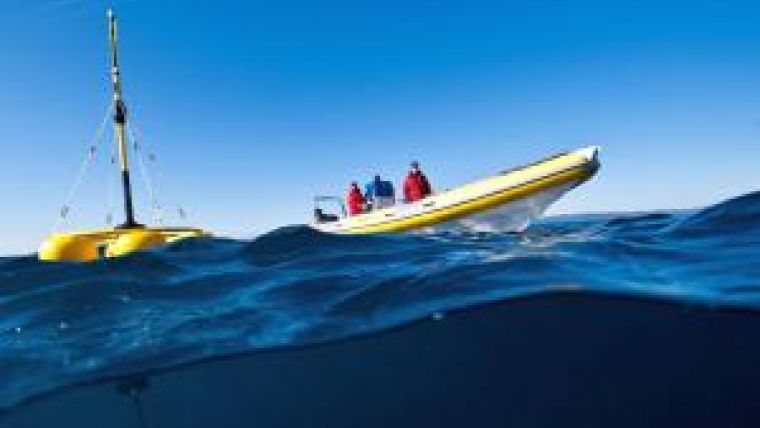Innovation at Sea
ACSA
ACSA, located in the Provence, South of France, is a high-tech company focused on underwater acoustic positioning and robotics systems whose activity is split between off the shelf systems and on-demand R&D projects. In preview, before its introduction at Oceanology International 2012, ACSA unveils its latest project, the SeaExplorer, a new type of underwater glider that is wingless, modular and faster.
ACSA was founded in 1995 as private company by Mr Hubert Thomas to bring to the market systems based on a proprietary patent describing underwater GPS. The first portable tracking GIB system (Figure 1) was introduced to the market in 1998. For the following 10 years, a full range of GIB products (GIB-FT for torpedo test range, GIB-Lite for coastal, GIB-SAR, et cetera) was developed to address customers’ needs. The very first robotics activity started in the early 2000s with the design of the Surface Unmanned Vehicle named Basil and a few years later, ACSA decided to enter the underwater glider market.
ACSA joined the ALCEN group in 2007 & last year became a fully owned subsidiary of the Group. Dr. Camille Béchaz was appointed as the new CEO in 2011.
Since its origin, ACSA has been a very innovative company where R&D has always represented the core competency to hold on to. Continuous innovation, strong expertise and responsiveness are the 3 axes confirmed by the new CEO.
Today, ACSA provides both off-the shelf products and internal and on-demand R&D expertise to customers. This double activity is also the solution to maintaining the high-skilled R&D team consisting of 15 people.
Based on its backlog of orders and current business, ACSA anticipates at least a 45 % increase in business for 2012, as was the case in 2011.
For the new CEO, increasing the company’s niche market positioning on foreign markets is a primary focus for future growth. So far, a network of international representatives supports the company in 9 nations. Targeted markets range from defence, oil & gas, ocean science and renewable energy.
The off-the-shelf systems’ activity relies today on the innovative underwater GIB positioning technique based on measuring the time of arrival of acoustic signals at a set of 4 buoys. This technique, completely different from traditional acoustic positioning systems such as USBL, can be compared to an ‘Inverted Surface Long Baseline (ISLBL)’. The technique first consistently provides metric to decimetric accuracies over large areas, in absolute latitude and longitude coordinates, independent of the ship position.
Second, real-time D-GPS and depth data of multiple targets can be provided without the use of a dedicated vessel in order to considerably reduce mission costs. Traditionally, GIB systems are used in the oil & gas industry, ocean science and defence for tracking divers, Torpedoes, ROV or AUVs.
It has to be noted that following the success of the GIB-SAR system which is the worldwide reference for localisation of black boxes of aircraft crashed at sea, ACSA introduced in 2010 the GIB-SUBSAR dedicated to fast and accurate relocalisation of a distressed submarine before intervention means arrival on accident site, and the DETECTOR-1000 for ultra-deep acoustic detection.
2012 represents the launch year of the very promising underwater SeaExplorer glider dedicated to ocean observation and monitoring. After a 4-year R&D program, SeaExplorer is clearly a breakthrough in glider design due to innovations based on end-users’ feedbacks. Key innovations of the SeaExplorer, Figure 2, are:
- Wingless glider to extend survivability and make deployment and recovery easy: no wing no break, neither entanglement with plastic debris, seaweed, fishnets,
- Modularity: large interchangeable payloads (9 litres and 4kg in water) in dedicated nose cone including 4 standard ‘puck’ ports and large wet area for CTD or other sensors. In addition, sensor acquisition is achieved by an open source dedicated controller allowing easy integration of new sensors by the end-user.
- Green design oriented. Power only relies on rechargeable batteries. Besides the impact of polluting primary batteries, the Li-Ion solution makes the glider safer avoiding vehicle opening and more cost-effective at each mission, eliminating cell exchange, return to the manufacturer for the exchange and re-balancing operations.
SeaExplorer glider achieves speeds of up to 1knot, twice as fast as many other vehicles, allowing accurate navigation in currents. It performs saw-tooth trajectories from the surface to depths (20 to 700m), allowing coastal and deepwater operations with a single glider.
Generally, SeaExplorer is capable of taking a wide variety of measurements in near real-time about the oceans’ characteristics by carrying out profiles of physical, biological and chemical features. These data are then transmitted at regular intervals via iridium satellite communication to researchers on shore for analysis while new routes’ instructions are downloaded (see Figure 3).
SeaExplorer gliders represent a cost-effective manner to persistently gather reliable data compared to traditional fuel burning ship-based sampling techniques.
The production is planned for September 2012 with Sea Acceptance Tests being performed at the company sea test base in Hyères (south of France).
For first units ordered in 2012, co-operation programmes are being offered to launch customers at very attractive conditions. Interested partners are welcome to visit ACSA at Oceanology International, London, stand B300.

Value staying current with hydrography?
Stay on the map with our expertly curated newsletters.
We provide educational insights, industry updates, and inspiring stories from the world of hydrography to help you learn, grow, and navigate your field with confidence. Don't miss out - subscribe today and ensure you're always informed, educated, and inspired by the latest in hydrographic technology and research.
Choose your newsletter(s)
























